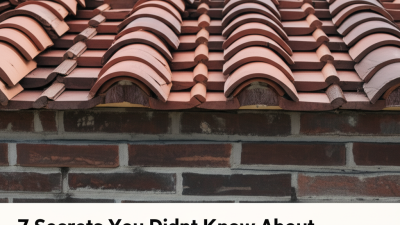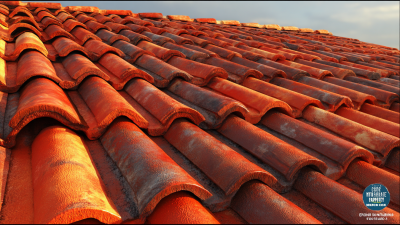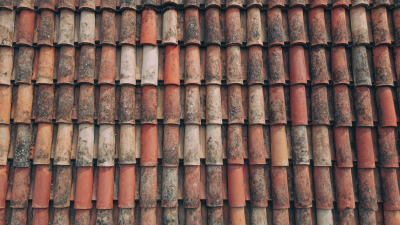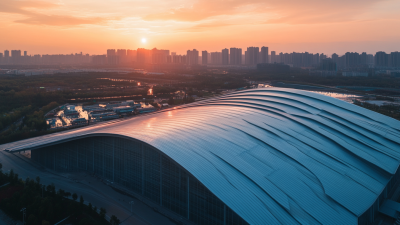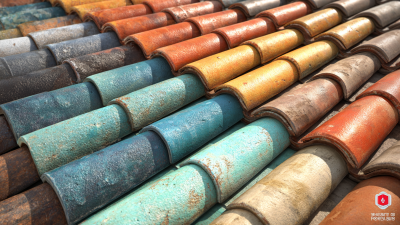
Leave Your Message
-
Phone
-
E-mail
-
Whatsapp

In the modern landscape of architecture and urban design, the significance of fire safety cannot be overstated, particularly for residential and commercial buildings alike. One of the most effective ways to enhance fire resistance in roofing materials is through the use of Fire Retardant Roof Tiles. These innovative tiles are engineered to withstand high temperatures and prevent the spread of flames, making them an essential component for buildings in fire-prone areas. As we delve into the numerous advantages of incorporating Fire Retardant Roof Tiles in construction, it becomes evident that they not only provide vital safety benefits but also contribute to energy efficiency and aesthetic appeal. This guide aims to explore the various aspects of Fire Retardant Roof Tiles, helping builders, architects, and homeowners make informed decisions in selecting roofing solutions that prioritize safety without compromising on style.

Fire retardant roof tiles are becoming an essential component of modern architecture, offering significant enhancements in safety for contemporary buildings. These specialized tiles are designed to withstand high temperatures and resist ignition, making them an ideal choice in areas prone to wildfires. The increased frequency of fire incidents has led to a growing awareness of the need for proactive measures in home construction, and utilizing fire retardant materials is a crucial strategy for protecting structures.
Key features of fire retardant roof tiles include not only their resistance to fire but also their durability and sustainability. Made from high-quality materials, these tiles can effectively reflect heat and reduce the intensity of flames, thereby minimizing damage during a fire event. Moreover, they often come with additional benefits such as energy efficiency, which can lower utility costs and improve a building's overall environmental impact. As part of a comprehensive fire safety strategy, including smoke alarms and other protective measures, fire retardant roof tiles contribute to safer living environments and can potentially save lives and property in the face of increasing fire risks.
| Feature | Description | Benefits |
|---|---|---|
| Fire Resistance Rating | Classification of materials based on their ability to resist fire. | Enhances building safety, reduces fire hazards. |
| Durability | Ability to withstand extreme weather conditions and prevent deterioration. | Increases lifespan and minimizes maintenance costs. |
| Aesthetic Variety | Available in various colors and styles to match modern architecture. | Enhances the visual appeal of buildings without compromising safety. |
| Energy Efficiency | Reflective properties that help reduce heating and cooling costs. | Lower energy bills and reduced environmental impact. |
| Compliance with Safety Standards | Meets local and international building codes for fire safety. | Ensures legal compliance and enhances overall safety of the structure. |
The rising trend in the adoption of fire retardant roof tiles in modern buildings is significantly driven by their long-term financial benefits. With the global green building materials market projected to reach USD 479.69 billion by 2033, the cost-effectiveness of these materials has become a major focus for both new constructions and refurbishments. Fire-resistant tiles not only enhance safety but also contribute to lowering insurance premiums, providing substantial savings over time.
When considering fire retardant roof tiles, it is essential to assess the initial investment against long-term gains. While the upfront cost may be higher compared to standard roofing materials, the durability and reduced maintenance associated with fire-resistant options can lead to lower total lifetime costs. Moreover, many building owners find that the enhanced safety features can lead to a faster return on investment due to increased property value and attractiveness to environmentally-conscious buyers.
Tips:
Fire retardant roof tiles are increasingly becoming a staple in modern architecture due to their durability and enhanced safety features. However, their environmental impact and sustainability are equally crucial in today's eco-conscious market. According to the 2022 Global Roof Coverings Market report, the demand for fire-resistant materials has surged by over 15% compared to the previous year, largely driven by increased regulations and growing awareness of fire safety.
These roof tiles are often made from sustainable materials, such as clay or recycled asphalt, which significantly reduces their carbon footprint. The U.S. Environmental Protection Agency (EPA) indicates that using fire retardant roofing materials can reduce overall energy consumption by up to 25%, as they reflect heat and minimize cooling energy requirements. Furthermore, the longevity of fire retardant tiles—often lasting over 50 years—means fewer resources are needed for replacements, aligning with sustainable building practices and supporting a circular economy.
Adopting fire retardant roofing solutions not only meets safety standards but also contributes positively to environmental sustainability, proving that modern buildings can be both safe and eco-friendly.
This chart visualizes the environmental impact scores of different fire retardant roofing materials, highlighting their sustainability performance in modern buildings.
 Fire retardant roof tiles are not only practical but also offer remarkable aesthetic appeal for modern buildings. With a variety of styles, colors, and textures available, these tiles can seamlessly blend into any architectural design. Whether a homeowner is looking for a traditional look or a sleek, contemporary finish, fire retardant roof tiles provide the versatility needed to enhance the visual charm of any property. This adaptability allows designers and homeowners alike to express their creativity while ensuring essential safety features are in place.
Fire retardant roof tiles are not only practical but also offer remarkable aesthetic appeal for modern buildings. With a variety of styles, colors, and textures available, these tiles can seamlessly blend into any architectural design. Whether a homeowner is looking for a traditional look or a sleek, contemporary finish, fire retardant roof tiles provide the versatility needed to enhance the visual charm of any property. This adaptability allows designers and homeowners alike to express their creativity while ensuring essential safety features are in place.
Moreover, the design possibilities with fire retardant roof tiles extend beyond mere aesthetics. Many manufacturers now produce tiles that mimic natural materials, such as wood or slate, without sacrificing performance. This innovation means that buildings can enjoy a sophisticated appearance without compromising on safety or durability. In a world where stylish design and safety must go hand in hand, fire retardant roof tiles stand out as an ideal solution, allowing modern buildings to achieve both elegance and resilience.
When it comes to modern building design, fire retardant roof tiles offer a unique blend of safety and aesthetics. Their installation process has been streamlined to cater to contemporary construction methods, ensuring that builders can integrate these tiles without excessive complication. With prefabricated options available, roof tiles can be easily fitted onto a variety of roof structures, significantly reducing installation time. Additionally, many manufacturers provide comprehensive installation guides, which help contractors and DIY enthusiasts alike achieve optimal results.

Maintenance of fire retardant roof tiles is also simplified, thanks to their durable materials and design innovations. These tiles typically require less frequent inspections and maintenance compared to traditional roofing options. Most fire retardant tiles are resistant to weather elements, which means they are less likely to warp or degrade over time. Regular cleaning to remove debris and occasional checks for loose tiles are usually sufficient to keep the roof in top condition. By investing in fire retardant roof tiles, modern buildings can thus enjoy enhanced safety, while also benefiting from reduced long-term maintenance commitments.
